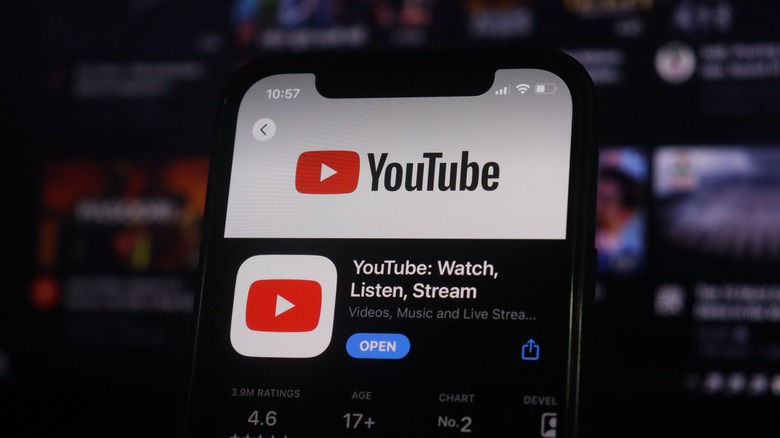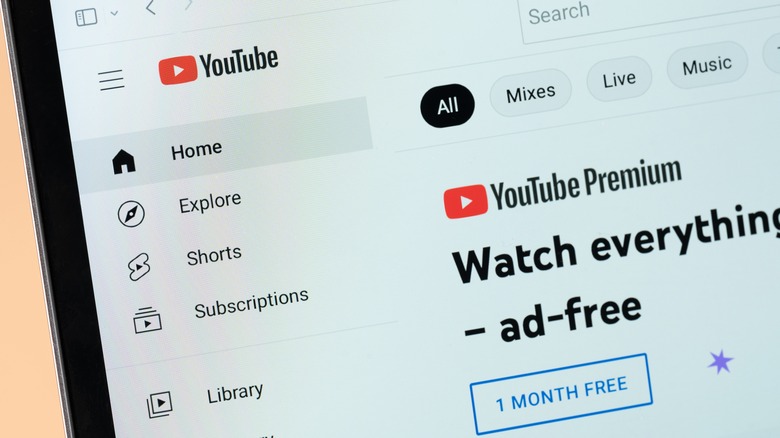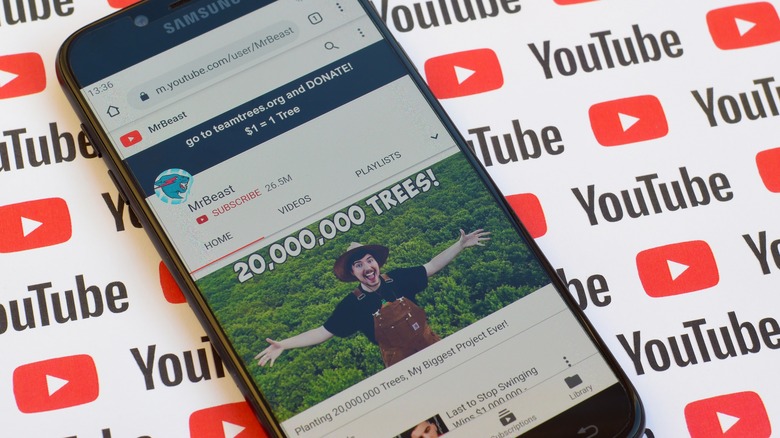How Much Money Do People Actually Make On YouTube?
According to data compiled by The Social Shepherd, YouTube is one of the biggest and most popular platforms on the internet, with around 2.7 billion monthly active users worldwide. In the United States alone, YouTube is accessed every single day by 62% of internet users, while 500 hours of video are uploaded to its servers every minute. Though Americans of all ages visit it, children spend an estimated 77 minutes per day watching YouTube videos.
In short, YouTube is both a cultural powerhouse and a tech behemoth — and it has the revenue to prove it. In 2022, the platform generated a staggering $29.2 billion in revenue, mostly from advertising and its Premium subscription service. As you might already know, YouTube creators get a piece of the revenue cake, both directly and indirectly. Mr. Beast makes millions every month, but not everyone can be Mr. Beast.
The truth is, making money on YouTube is not nearly as simple as uploading a few videos and hoping they go viral. To be eligible for participation in the YouTube Partner Program, which enables creators to earn money through six different features — advertising revenue, YouTube Premium revenue, Super Chat & Super Stickers, Super Thanks, Shopping, and channel memberships — you have to meet various requirements.
How to make money on YouTube
If you want to monetize your YouTube channel with ad revenue or through YouTube Premium, you need to have at least 1,000 subscribers. However, there are exceptions. If your channel focuses on long-form videos, you need to accumulate 4,000 watch hours in the last 12 months. For a Shorts channel, the requirement is 10 million views in the last three months. Bear in mind, these are just the basic requirements.
The thresholds for Super Chat & Super Stickers, Super Thanks, Shopping, and channel memberships are slightly lower. You need 500 subscribers, three video uploads in the last three months, or 3,000 watch hours for long-form content (3 million views for Shorts videos). If you plan to sell products from other brands, which is only possible if you're located in the United States or South Korea, you need to meet specific video view thresholds, or have 20,000 people subscribed to your channel.
Most creators earn next to nothing
With the requirements being what they are, it's easy to see why most YouTube channels aren't even eligible for monetization in the first place. Rudimentary calculations suggest that the vast majority of monetized channels generate what can be described as an insignificant amount of revenue.
The social media analytics website Social Blade has a calculator you can use to estimate the potential earnings of YouTube channels. Suppose your videos generate 1,000 daily views, and let's assume the CPM (cost per 1,000 ad impressions) on your channel is between $0.25 and $3. You would make between $7.50 and $90 per month. The range is wide because CPM rates are influenced by a variety of factors, from the viewers' country and the type of video to the niche of your YouTube channel.
If you've ever managed a YouTube channel, you know that achieving 1,000 daily views is no small feat. The amount of effort that goes into creating unique videos, promoting them through social media, and building a subscriber base — all while adhering to YouTube's vague guidelines — is hardly justified by a monthly income of $90.
Mid-level YouTubers make enough to live comfortably, top creators are millionaires
If we assume that a mid-level YouTuber is someone who runs a channel that is big within a certain niche, but not as popular as Mr. Beast, it's safe to say they make a very comfortable living.
If they receive approximately 50,000 daily views, with a CPM of between $0.25 and $3, that amounts to between $4,500 and $54,000 annually, according to Social Blade. Again, this is a very wide range, but it represents just ad revenue. Unlike struggling and up-and-coming creators, mid-level YouTubers have decent-sized followings and communities, which likely means they also have sponsorship deals, sell merchandise, receive commissions from products their fans purchase, and so on. Depending on their niche, they may also have a Patreon set up or engage in other types of crowdfunding.
In general, mid-level YouTubers usually make more money through sponsorship deals than ad revenue. They may not be as wealthy as Elon Musk, but most of them earn more than the average executive in the U.S. — so, more than about $116,000 per year — and are able to live comfortably off their YouTube income.
YouTubers like Mr. Beast, Jeffree Star, and Markiplier are worldwide celebrities and, as you might have guessed, multi-millionaires. They might be YouTube's top creators today, but they all started from the 1,000-subscriber bottom and worked their way up, which should also count for something.



